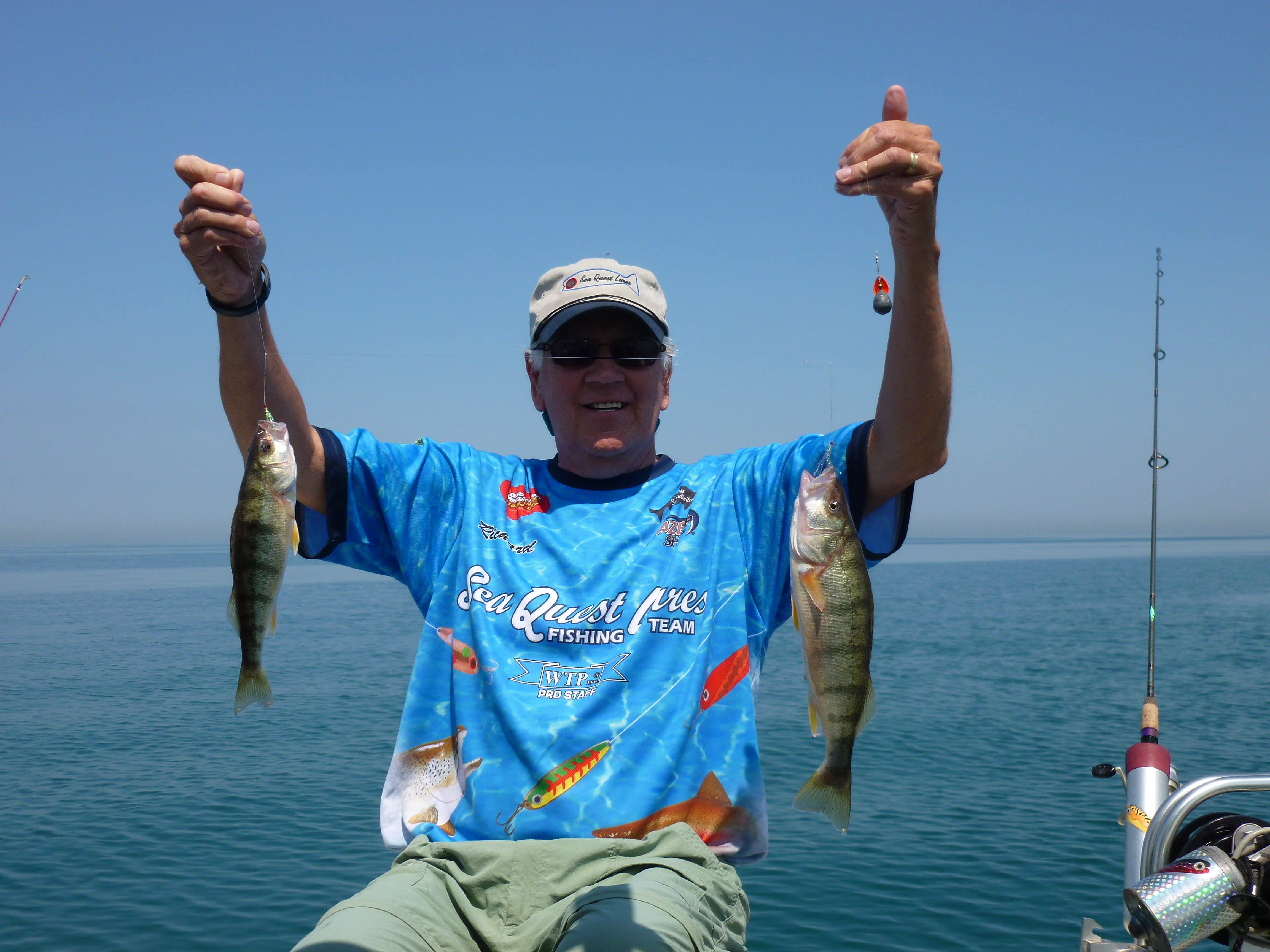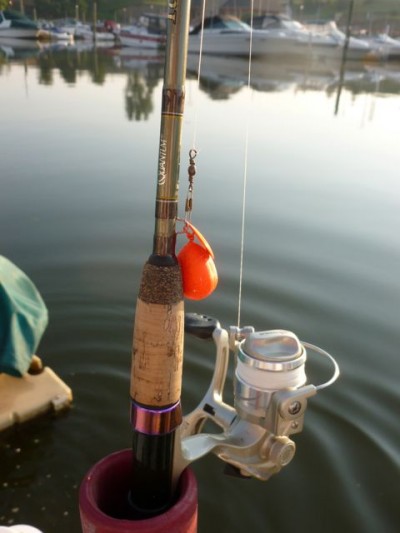Drifting Flies for Michigan Perch
Dave Mull 08.22.13

If you want to catch Michigan perch and lots of them, try drifting for them with a rig featuring two flies baited with minnows.
“I think flies give a little more action to trigger fish, and if the fishing is really good, you don’t even need minnows,” says Adam Pyle, who runs Pyle’s Porthole in South Haven and harvests his share of the tasty panfish whenever time allows him to get out of his tackle shop. South Haven is well known as a great port for targeting Lake Michigan perch. This week, anglers were harvesting 35-fish limits in about 40 feet of water, and Pyle said rigs featuring flies were part of the winning combination.
As a longtime Great Lakes perch fan, I’d always scoped for a school on my boat’s sonar unit and then anchored on top of it, fishing for them with rigs featuring two plain hooks and minnows. This week, thanks to Richard Holm, whose Sea Quest Lures Company makes Perch Flies, I learned a better way. Instead of anchoring on the school, simply cut the motor upwind of it and drift through, dragging your offerings along the bottom.
Holm and Banas took me out on Lake Michigan from their homeport down in Portage, Indiana, and we caught a bunch on the flies. Holm says the flies work equally well in the Michigan perch hotspots of Saginaw Bay, Lake St. Clair, and Lake Erie—all of which are on fire right now for these fish.
The Perch Flies added some color and flash and made the overall presentation look bigger. Rich said he believes the fly sometimes can still catch a fish even after a short-biting fish steals the minnow. And while lively minnows are usually the rule for catching perch, the flies still caught fish when baited with dead minnows.
Holm ties the fly rigs on leaders of six-pound fluorocarbon line. The flies, which feature bright beads with or without strands of tinsel on long-shank, No. 6 Aberdeen-style hooks, go on three-inch loops created with a simple figure-eight knot. The flies are about 16 inches apart, and a snap swivel holds a bell-shape sinker on the bottom of the leader another 16 inches below the bottom fly. Holm adds attraction to the sinker by including a small, colorful Colorado spinner blade in the clip.

“I don’t know if it makes a lot of difference, but I believe perch are curious, so the spinner blade clacking against the weight might help bring fish in to where they can see your baits,” explained Holm, who will again be delivering his popular perch seminar at the Grand Rapids Ultimate Sports Show in March.
Since we were targeting fish on the bottom in 35- to 45-foot depths, we used a one-ounce weight. The snap swivel makes it easy to exchange for a lighter weight when the schools are in shallower water. Rods were ultra-light- and light-action seven-foot models, spinning reels spooled with thin braided line or six-pound test monofilament—light, wispy combos that made it fun to fight fish to the surface.
Pyle noted that the flies are easy to tie for anyone with some proficiency in the art of fly tying (he makes his own models that he sells in his shop). He also noted that ice jigs can be substituted for the flies, especially ice jigs with larger hooks in the No. 6 and No. 4 sizes, which are easier to extract from a perch’s mouth, yet large enough to securely hook biting fish.
Good electronics, both GPS and sonar, are extremely helpful when drifting for perch. The sonar shows you the schools—they often look like a bullet-shaped mound coming off the bottom. The sonar also shows you bottom composition, and perch like things other than sand. Look for rocky areas where perch feed on crayfish and small gobies. A subtler find is the transitional area between sandy bottoms and clay. Most sonar units show sand as a thin line, and the softer clay as a thicker line, and perch like clay and mud bottoms where they forage for insect larvae. The GPS tracking feature allows you to retrace a successful drift through an area—simply pull lines, motor back upwind of the where you were, and let the wind push you back along the same course.
Another drifting tip: to avoid tangles and cover a larger area, spread your lines apart, placing rods in holders. Holm likes to cast a couple lines well away from the boat and drop others straight down so that the sinker ticks the bottom as the boat drifts.
While ideal perch-drifting days offer flat seas and light winds, the technique works in bigger waves and higher winds too, with the help of a drift sock. The aquatic parachute slows the boat down to give the fish a good look at your baited flies. Simply tie it off on your boat where it won’t swing around and take your lines too close to each other.
With Michigan’s many excellent perch fisheries, it pays to add drifting with flies to your bag of tricks. Not only is it effective, it’s one of the most relaxing ways to fish for this fine table fare, and not having to use an anchor makes your day on the water much more enjoyable.
For more information on Michigan fishing go to michigan.org. Click here to purchase a Michigan fishing license online.

